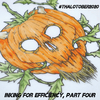4 Cultural Careers for the Inartistic
by Gabrielle Mizrahi
My elementary school, in the heart of Long Island, prided itself on offering a number of “extracurricular” programs in order to give us our a leg up when applying to colleges in the distant future. The one program I dreamed of joining was Art Enrichment. Exclusively for 4th grade and up, the Art Enrichment students were the coolest in the school. These selected were invited to the art room once a week to work on an “advanced” project, using materials inaccessible to those whom were not deemed worthy. Each year the final project saw the Art enrichment students smearing their faces with Vaseline, sticking straws up their noses, and covering themselves with plaster to create a mask they could then decorate and proudly wear around the school. Today, at 22 I cringe at the idea. My pores! But back then it was all I wanted.
I waited with anticipation as I entered 4th grade, confident that I would soon be joining those grand masters known as Art Enrichment students. However, as the teacher passed out the acceptance letters I was unceremoniously passed over again and again, until there were no more letters left. I was devastated. I went home and opened the medicine cabinet, glaring at the industrial sized tub of Vaseline housed there that now taunted me.
As devastating as this experience was to my young psyche, it taught me a valuable lesson: I was never going to cut it as an artist. Luckily, there are a number of career options out there for those who, like me, may not have the skill, but certainly have the passion for the art world.
1) Curator
What they do: Curators not only get to select which artists and pieces are displayed, but they decide on the order in which the artwork is placed, as well as what information is displayed alongside each piece. They even decide, the wall colors in the gallery where the work is featured. Curators are also expected to provide interpretation, and often conduct original research and writing on the displayed works.
How to get the job: There is tough competition for curator positions. A Masters degree is definitely required, usually with specialization in a particular topic, time period, or form of art.
2) Education
What they do: The museum education department is often associated with conducting tours for bored groups of high school students on field trips. However, this position is much more rewarding. The Education Department is responsible for community engagement with the institution. That includes specialized programming for different groups (such as senior citizens, children or teens), the creation of family programs, and the training of docents. The Education Department is often one of the most important in upholding a museum’s mission.
How to get the job: A strong background in community engagement is important to becoming a museum educator. Usually, at least a Bachelors degree is required and often an educational MA is an advantage. A record of volunteerism with disadvantaged community members is an advantage for applicants to this position.
3) Communications
What they do: The communications team gets the word out on what is happening at the museum. Using social media, email lists, and sometimes even word of mouth, the communications team promotes the institution and increases attendance on a day-to-day basis and special events. The team also is responsible for advertising, from radio commercials, billboards, and inserts in local newspapers.
How to get the job: If you are addicted to social media this job is for you. A knowledge of Twitter, Instagram, and Facebook is definitely important. A Bachelor’s degree is Communications or Marketing is a great way to get your resume to the top of the pile.
4) Fundraising and Development
What they do: The job of the Development department is to raise money. From writing grants, increasing membership, and soliciting corporate sponsorship, the development team works to find the money to keep the doors of the organization open.
How to get the job: Internships in fundraising for non-profits is important to becoming a development professional. Organizations look for someone with a proven record of raising money when hiring for this job. Check out the jobs or internships page of local non-profits (preferably in the arts) to see if anyone needs a fundraising intern.
Despite my early disappointments in the 4th grade, I discovered there are other exciting ways to get involved in the arts without being an artist. Museums and galleries need people with all different skills and experience in order for the arts to continue to grow.
Photos courtesy of:
www.newmuseum.org
museummonger.wordpress.com
irisemedia.com
nmwa.org











